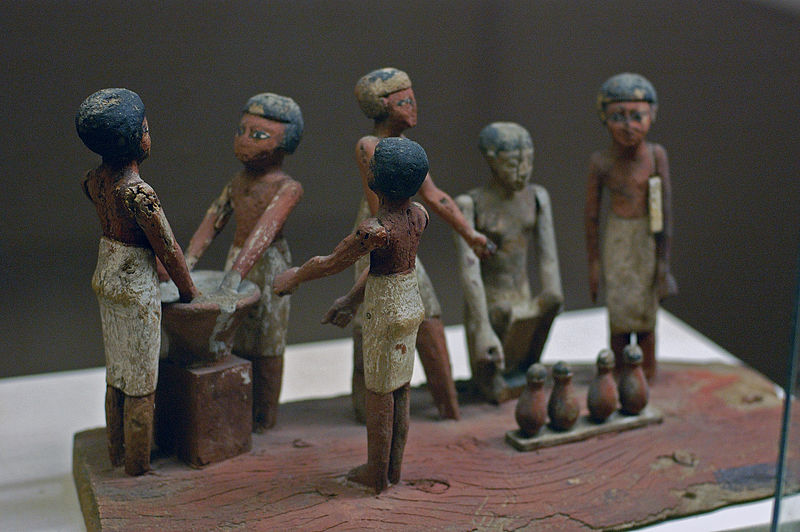Chemistry: Beer
Model of Egyptian beer making.
Beer is the world's oldest and most widely consumed alcoholic beverage and the third most popular drink overall after water and tea. It is recorded in the written history of ancient Egypt and Mesopotamia. The earliest Sumerian writings contain references to beer. A prayer to the goddess Ninkasi known as "The Hymn to Ninkasi" serves as both a prayer as well as a method of remembering the recipe for beer in a culture with few literate people.
The process of making beer is known as brewing. A dedicated building for the making of beer is called a brewery, though beer can be made in the home and has been for much of beer's history. A company which makes beer is called either a brewery or a brewing company. The basic ingredients of beer are water; a starch source, such as malted barley, able to be fermented (converted into alcohol); a brewer's yeast to produce the fermentation; and a flavouring such as hops. Here is a basic run-thought of the process:
1. The first step, where the wort is prepared by mixing the starch source (normally malted barley) with hot water, is known as "mashing". Hot water (known as "liquor" in brewing terms) is mixed with crushed malt or malts (known as "grist") in a mash tun.
2. The grains are now washed in a process known as "sparging". This washing allows the brewer to gather as much of the fermentable liquid from the grains as possible.
3. The process of filtering the spent grain from the wort and sparge water is called wort separation. The tradition process for wort separation is lautering, in which the grain bed itself serves as the filter medium.
4. The sweet wort collected from sparging is put into a kettle, or "copper", (so called because these vessels were traditionally made from copper)[25] and boiled, usually for about one hour. During boiling, water in the wort evaporates, but the sugars and other components of the wort remain; this allows more efficient use of the starch sources in the beer.
5. . Hops are added during boiling in order to extract bitterness, flavour and aroma from them.
6. In some breweries, the hopped wort may pass through a hopback, which is a small vat filled with hops, to add aromatic hop flavouring and to act as a filter; but usually the hopped wort is simply cooled for the fermenter, where the yeast is added.
7. When the beer has fermented, it is packaged either into casks for cask ale or kegs, aluminum cans, or bottles for other sorts of beer.
Sources:
Wikipedia




0 comments:
Post a Comment